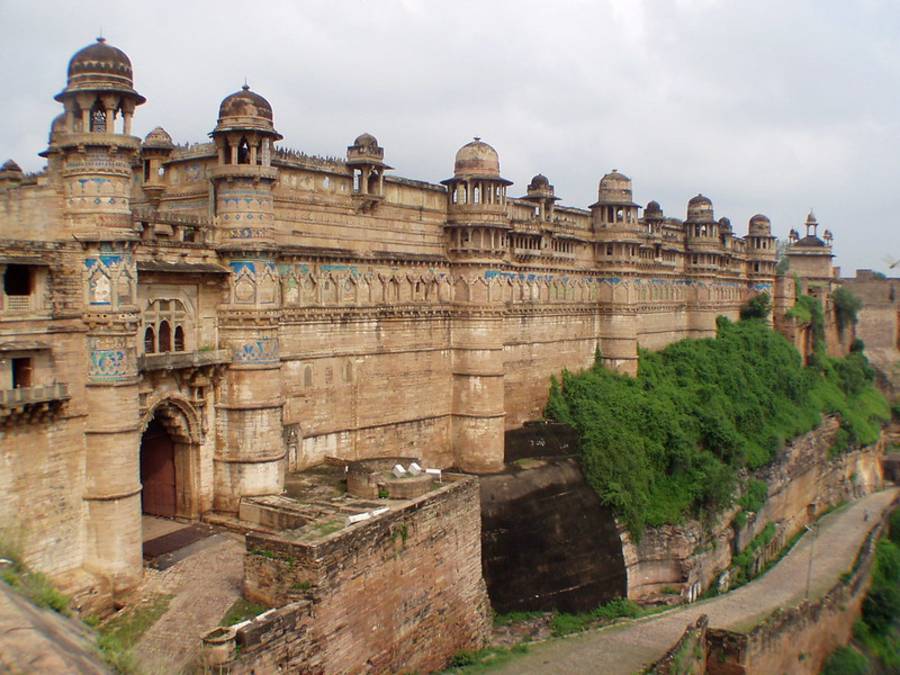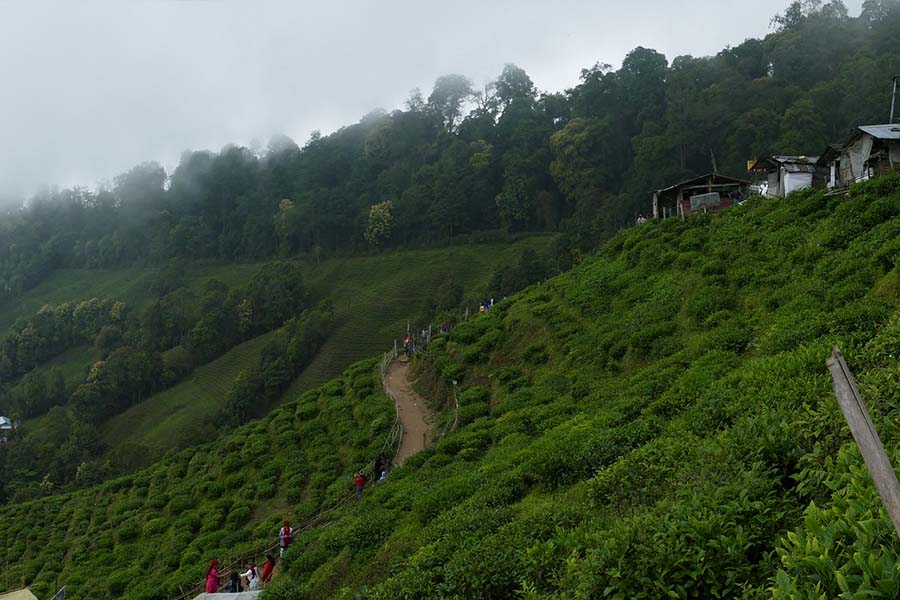Gwalior Fort
Gwalior Fort is a historical fort located in the city of Gwalior in the Indian state of Madhya Pradesh. The fort is situated on a hilltop overlooking the city, and it is considered to be one of the most impenetrable forts in India.
The fort has a rich history and has been ruled by various dynasties over the centuries. It was first built in the 8th century by the Rajput king Suraj Sen, but the present structure dates back to the 15th century when it was rebuilt by the Tomar dynasty.
The fort complex is spread over an area of 3 square kilometers and comprises several palaces, temples, and other buildings. Some of the major attractions of the fort include the Man Singh Palace, the Gujari Mahal, the Teli-ka-Mandir, and the Saas Bahu Temple. The fort also houses a museum that displays a vast collection of artifacts and exhibits related to the history of the fort and the region.
The Gwalior Fort is also famous for its unique architecture and engineering. The fort is built on a plateau that is surrounded by high walls and towers, and it is accessible through several gates. The fort also has a series of underground passages and tanks that were used for water storage and to supply water during a siege.
Overall, the Gwalior Fort is an important historical landmark in India and is a must-visit destination for history buffs and architecture enthusiasts.
History
The history of Gwalior Fort can be traced back to the 8th century when it was founded by the Rajput king Suraj Sen. According to legend, Suraj Sen was cured of a deadly disease by a saint, who asked him to build a fort on the hilltop to protect the people from the enemies. The fort was initially named “Gopachal” after a saint who lived on the hill.
Over the centuries, the fort was ruled by various dynasties such as the Kachwaha, Tomar, Mughal, Maratha, and Scindia. It was during the Tomar rule in the 15th century that the fort was rebuilt and expanded. The Tomar dynasty ruled Gwalior for over a century before it was conquered by the Mughals in the 16th century.
During the Mughal rule, the fort was used as a prison and many Rajput kings were imprisoned here. Later, the fort came under the control of the Marathas and then the Scindia dynasty, who ruled Gwalior from the 18th century until India’s independence in 1947.
The fort played a significant role in India’s struggle for independence. In 1857, during the Indian Rebellion, the fort was captured by the rebels and used as a stronghold against the British. The British recaptured the fort after a long siege and established their control over Gwalior.
Today, Gwalior Fort is a popular tourist attraction and is known for its rich history, unique architecture, and beautiful views of the city. It is considered to be one of the most significant historical landmarks in India.
The structure of the Gwalior Fort
The structure of Gwalior Fort is a stunning example of medieval Indian architecture and engineering. The fort is situated on a rocky hill that rises 100 meters above the surrounding plains. The fort complex covers an area of about 3 square kilometers and is surrounded by walls that are over 2 kilometers long.
The fort has several gates, including the Hathi Pol (Elephant Gate), the Badalgarh Gate, the Karn Mahal Gate, and the Gwalior Gate. The Hathi Pol is the main entrance to the fort and is named after the two large stone elephants that flank the entrance.
Inside the fort, there are several palaces, temples, and other buildings that reflect the different architectural styles of the various dynasties that ruled the fort. Some of the major structures inside the fort include:
- Man Singh Palace: This palace was built by Man Singh Tomar, a Tomar king who ruled the fort in the 15th century. The palace has several halls, courtyards, and balconies and is known for its intricate carvings and paintings.
- Gujari Mahal: This palace was built by Raja Man Singh for his queen Mrignayani, who was a Gujar princess. The palace is now a museum that displays a collection of sculptures, inscriptions, and other artifacts.
- Teli-ka-Mandir: This temple is a blend of North Indian and South Indian architectural styles and is believed to have been built in the 8th century. The temple is dedicated to Lord Vishnu and is known for its towering gopuram.
- Saas Bahu Temple: This temple is a group of two temples that are dedicated to Lord Vishnu. The temples are known for their intricate carvings and the unique architecture.
Apart from these structures, the fort also has a series of underground passages and tanks that were used for water storage and to supply water during a siege. The fort is also known for its unique hydraulic system that supplied water to the palaces and temples from the nearby river. Overall, the structure of Gwalior Fort is a testament to the ingenuity and architectural prowess of the ancient Indian engineers and builders.
Things to see at Gwalior Fort
There are several things to see at Gwalior Fort, which is one of the most impressive and historically significant forts in India. Here are some of the major attractions that visitors should not miss:
- Man Singh Palace: This is a beautiful palace built by the Tomar dynasty in the 15th century. It is known for its beautiful architecture, intricate carvings, and beautiful paintings. The palace has several courtyards, balconies, and halls that visitors can explore.
- Gujari Mahal: This palace was built by Raja Man Singh for his queen Mrignayani, who was a Gujar princess. The palace is now a museum that displays a collection of sculptures, inscriptions, and other artifacts from the region’s rich history.
- Teli-ka-Mandir: This is an ancient temple dedicated to Lord Vishnu that is believed to have been built in the 8th century. The temple is known for its unique architecture, towering gopuram, and beautiful carvings.
- Saas Bahu Temple: This is a group of two temples that are dedicated to Lord Vishnu. The temples are known for their beautiful carvings and intricate designs.
- Jauhar Pond: This is a large water reservoir that was used to store water for the fort’s inhabitants during a siege. The pond has several underground channels that connect it to nearby rivers and streams.
- Light and Sound Show: The fort hosts a daily light and sound show in the evening that narrates the history of the fort and the region. The show is a popular attraction and a great way to experience the fort’s history and beauty.
Overall, Gwalior Fort is a must-visit destination for anyone interested in Indian history, architecture, and culture. The fort’s rich history, unique architecture, and stunning views make it a truly unforgettable experience.
Nearby Attractions with Km
There are several nearby attractions that visitors to Gwalior can explore. Here are some of the major ones with their approximate distances from Gwalior Fort:
- Jai Vilas Palace: This is a beautiful palace built by the Scindia family in the 19th century. It is located in the heart of Gwalior and is about 3 km away from the fort.
- Tansen Tomb: This is the tomb of Tansen, one of the most famous musicians of the Mughal era. It is located in the center of Gwalior and is about 4 km away from the fort.
- Gopachal Parvat: This is a group of Jain temples that are located on a hill about 2 km away from the fort. The temples are known for their beautiful architecture, intricate carvings, and stunning views of the surrounding countryside.
- Sun Temple: This is a beautiful temple dedicated to the Sun God that is located in the town of Mitavali, about 42 km away from the fort. The temple is known for its unique architecture and stunning views of the surrounding hills and valleys.
- Bateshwar Temples: This is a group of over 100 temples that are dedicated to Lord Shiva. They are located near the town of Morena, about 35 km away from the fort. The temples are known for their beautiful architecture and serene surroundings.
- Chambal Safari: This is a wildlife safari that takes visitors along the Chambal River, where they can see several species of wildlife, including crocodiles, gharials, and various bird species. The safari is located about 65 km away from the fort.
These are just a few of the nearby attractions that visitors can explore while in Gwalior. There are many other interesting destinations in the region, including historical sites, natural wonders, and cultural attractions.
How to reach
Gwalior is a well-connected city in the central Indian state of Madhya Pradesh, and it is easily accessible by road, rail, and air.
By Air: The nearest airport is Rajmata Vijay Raje Scindia Air Terminal, which is located about 10 km from the city center. The airport has regular flights to major cities in India, including Delhi, Mumbai, and Kolkata.
By Rail: Gwalior is an important railway junction and is well connected to major cities in India, including Delhi, Mumbai, Kolkata, and Chennai. The Gwalior railway station is located in the heart of the city and is about 5 km away from the fort.
By Road: Gwalior is well connected to major cities in India by road. The city has a good network of national and state highways, and several bus services operate from nearby cities, including Agra, Jaipur, Delhi, and Indore.
Local Transportation: Once you arrive in Gwalior, you can use various modes of local transportation to reach the Gwalior Fort. You can hire an auto-rickshaw, a taxi, or a private car. There are also shared cabs and buses available. The fort is located in the heart of the city and is easily accessible by road.



